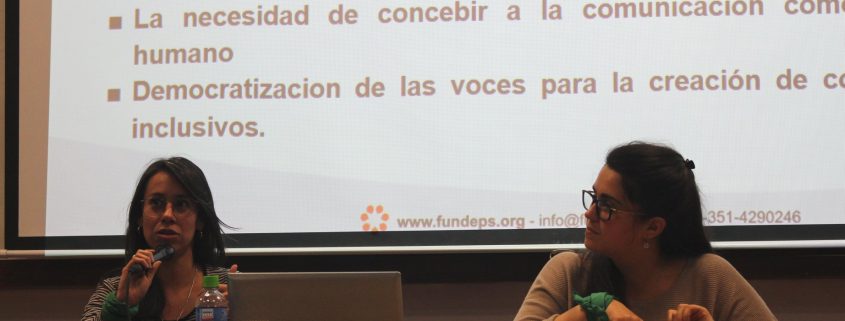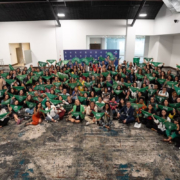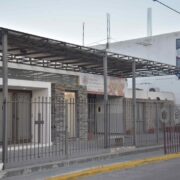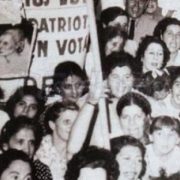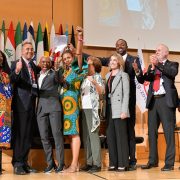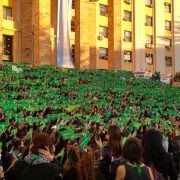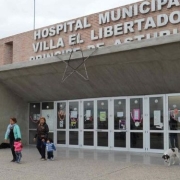Gender in the classroom and in academic discussions
On October 17 and 28 we participated in two different meetings organized by the Faculty of Communication Sciences of the National University of Córdoba (FCC), in order to present our research on gender, journalism and advertising.
Below, we offer a google translate version of the original article in Spanish. This translation may not be accurate but serves as a general presentation of the article. For more accurate information, please switch to the Spanish version of the website. In addition, feel free to directly contact in English the person mentioned at the bottom of this article with regards to this topic”.
During the month of October, we participated in two meetings with professionals, teachers and students of the FCC, where we discussed communication and advertising from a gender perspective.
The first one was held on October 17, within the framework of the Annual Cycle of Encounters and Debates, conducted by the Chair of Television Programming Policies of the Faculty of Communication Sciences. There we present the results of our research “Media organizations and gender”. The Cycle was based on an initiative created by the teaching staff integrated by Ulises Oliva and Sofía Moroz, with the interest of bringing the problems that cross the various spaces linked to communication from a critical perspective into the classroom.
The day was held in a classroom full of participatory students and teachers and aware of the need to promote up-to-date training and attentive to the social, political and cultural transformations and demands of the moment.
Those who participated in the space, did not skimp on gestures of amazement at the figures of gender inequalities in the journalism industry. The surprise revealed not only the importance of research on communication and gender, but also the need for its dissemination among those who are (and will be) part of this industry.
We understand that this meeting means a great step towards incorporating the gender perspective in the curricular contents. Something that probably is not yet reflected in the formal programs of the subjects, but that, little by little, begins to be seen as part of the real curriculums.
The second space of which we participated was the Institute of Institutional Communication that opened the doors to the debate on advertising messages in the meeting on “Communication, advertising and gender perspective“, held on October 28.

In this instance, we present some of the lines of research addressed in the “Advertising Sector and Gender” report, emphasizing our contribution to the analysis of the advertising industry: the gender composition of advertising agencies, both labor structures, and their policies of genre.
We were sharing the space with Manuel Bomheker, who presented some methodological tools so that those who are dedicated to communication can incorporate the gender perspective in their productions. Also present was Elisa Robledo, who contributed to the critical analysis of advertising pieces, showing the evolution of advertising messages and suggesting new routes for more inclusive and diverse advertising, from a gender perspective.
This time, the discussion took place between communication and advertising professionals, who day by day rehearse strategies to produce more democratic contents that enable the construction of meanings from the diversity of identities.
Through these activities, the University acquires a leading role in the transformation of communication since it enables the deconstruction of discourses and senses from the critical approach paid by feminisms. Therefore, we celebrate the generation of these spaces for discussion and capacity building for those who are dedicated and dedicated to the production of media and advertising content.
Contact
Cecilia Bustos Moreschi, cecilia.bustos.moreschi@fundeps.org

